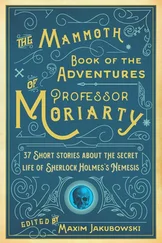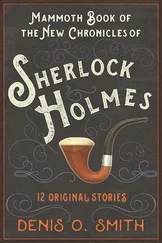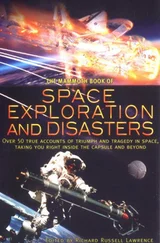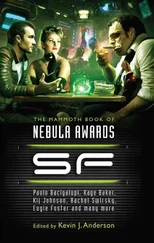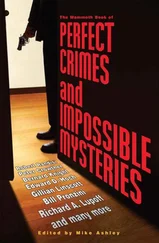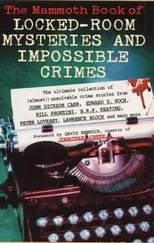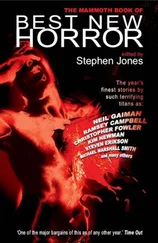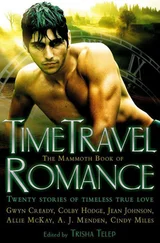He was ready for take-off; he gestured, the crew stood back, and the engineers and technicians ran for the cars standing by. They started the motors so they could follow alongside the plane during take-off, watching the tail for a successful rocket “light.”
A roar and she rolled rapidly, picking up speed, the green cars barreled alongside her at close to 100 miles an hour for over a mile of the lakebed. Into Carder’s car the pilot called, “Okay, I’m lighting one.” A 20-foot streak of orange fled into the air.
Carder called back, “One is good.”
And immediately: “Here goes two.”
A second orange streak shot out, Carder saw it and said close into the mike, “Two is good.” The blast from the rockets jolted the moving cars and the plane was still eating up the lakebed, far ahead of us now. Another quarter of a mile and the Skyrocket began to shed the ground; hanging heavily over the desert she reluctantly rolled a bit, the gear went up. I tensed with the pilot in the ship; if anything went wrong at this moment – that would be all! The seconds went by and she gathered speed, rocked obediently over and began the steady climb up. The sky held, only for a few more seconds, the two bright spots with the chase pilot diving to catch up… and then the planes were absorbed into the distance.
Scott Crossfield’s engine explodes
The US government’s research program into rocket-propelled aircraft made its tests at Edwards Air Force Base (formerly Muroc Army Air Force Base). Between 1950 and 1955 Scott Crossfield flew nearly all of the experimental aircraft under test at Edwards. These included the X-1, XF-92, X-4, X-5, D-558-I and the Douglas D-558-II Skyrocket. On 20 November 1953, he became the first man to fly at twice the speed of sound.
NACA was primarily concerned with research and did not usually try to break records, although in the case of Mach 2 it was allowed to make an exception to gather the research data.
In 1988 Crossfield described many of his experiences, including the value of the experimental aircraft program:
The research airplane program was probably the most successful government research program on record. It involved about 30 airplanes for 30 years, running from 1945 to 1975, and probably produced almost all of the information that has been essential to our transonic and supersonic flights, our transonic transports, and our space program.
Crossfield described the purpose of the X-1 program:
The X-1 was the first of the research airplane series – post-war research series. Its primary purpose – or its sole purpose – was to see if we could, in fact, exceed the speed of sound with a manned aircraft. There were a lot of people who said that we could not. And a lot of reputable opinions that said that we could.
It was very simply designed. It was an airplane that incidentally was patented by Bob Wood in 1945. It used an RMILL4 engine which was the beginning of our successful rocket era [and was] developed by the Navy and Bob Truax. The all-point simplicity and design – and the objectivity and design – made it very successful. It did accomplish its end of flying supersonically in 1947, of course, [we all know] with Captain Charlie Yeager at the controls.
The design of the D-558-II Skyrocket became the standard model for swept-wing aircraft. Crossfield commented:
The D-558-II was one of the research airplanes funded by the Navy. That is the reason that it did not have the “X” designation.
It was primarily the review to look at what the transonic effects of the swept-wing would be. With it we flew some several hundred flights and wrote the book on how we could design and build modern swept-wing airplanes. It proved many of the things that we have learned since then.
The D-558-II was a very productive airplane. Almost every airplane in the air today has a little bit of the D558-II basic information – or what we learned from it – in it.
Crossfield gave a specific example of this:
It has been well known for many years that a characteristic of swept-wing aircraft is instability at high angles of attack. With the D-558-II, we learned many many ways to relieve that instability so that we could get the handling qualities that pilots need to fly airplanes in a commercial environment. Handling qualities… engineering ease for controllability… [are all] desirable characteristics.
Test pilots, like Crossfield, often had to fly several different experimental aircraft during a single day. Crossfield described such a day:
In the days of the research airplane program, things were somewhat different than the bureaucracy that we find ourselves in today. For instance, there could be a day where I would do an X-1 launch early in the morning, fly the X-4 over lunch hour, and do a D-558-II launch in the afternoon. That was not a typical day, but there were days of that type. We were very versatile in our operation in those days.
Crossfield gave his impression of the different handling characteristics of the X-1 and the D-558-II:
Well, I flew both the X-1 and the D-558-II. They were quite different in their flying characteristics even though they were both pretty good flying airplanes. [They were not]… necessarily as good as we would like to see because they were experimental.
I am often asked what goes through your mind when you are flying these airplanes? The answer has to be that you do not have time to [ponder] philosophical considerations of what is in your mind. You are concentrating all of your capabilities on the job at hand.
The basic shape of the X-1 came from the .50 calibre bullet. Crossfield:
When they were designing the X-1, we did not have the capability to do wind tunnel testing transonically. So they made a very good… decision. They made the forebody of the X-1 shaped like a 50 caliber bullet which was a well-known supersonic projector at the time.
It was [that kind of] judgmental design characteristic that was essential at that time; but we had no way to test [it]. And that is the sole reason for the research airplane program. We had the capabilities with engines to speeds and altitudes; [but] we had no capability to test. We did not know how to analyze, so flight test was the only way.
Crossfield described the development of the X-15, including discussions with Walt Williams:
Well, as I remember the genesis of the X-15, one time coming home from a fishing trip with Walt Williams (who was my boss at NACA)… We heard on the radio that a 75,000 pound thrust Viking rocket engine was successfully fired at Santa Suzanna. Of course nothing would do but I got a piece of paper out of his glove compartment and we decided what we could do to man a plane with a 75,000 thrust rocket. That became the X-15. We gave that idea to Hilbert Drake who developed it in 1955. In that year the X-15 went under contract.
Crossfield described what they were trying to achieve at that stage of X-plane development and how it contributed to the drive toward space and eventually hypersonic travel:
The research airplane program’s primary goal was to develop technology that we could put to useful purpose – supersonic high-speed aerodynamics… We had plans to take us [all the way] into space. That was part of the long-range goal for the research airplane program. Unfortunately, that got diverted by many other circumstances.
The productivity of an airplane is gauged by its speed times its payload, divided by its fuel consumption. The way to get that productivity is to go fast. And the way to go fast is to go high. With the engines that we were developing in those days, we were trying to find out what it took to go high so that we could go fast and get the productivity that we needed for the air transport as we saw it at that time – and the way we see it today.
Читать дальше

